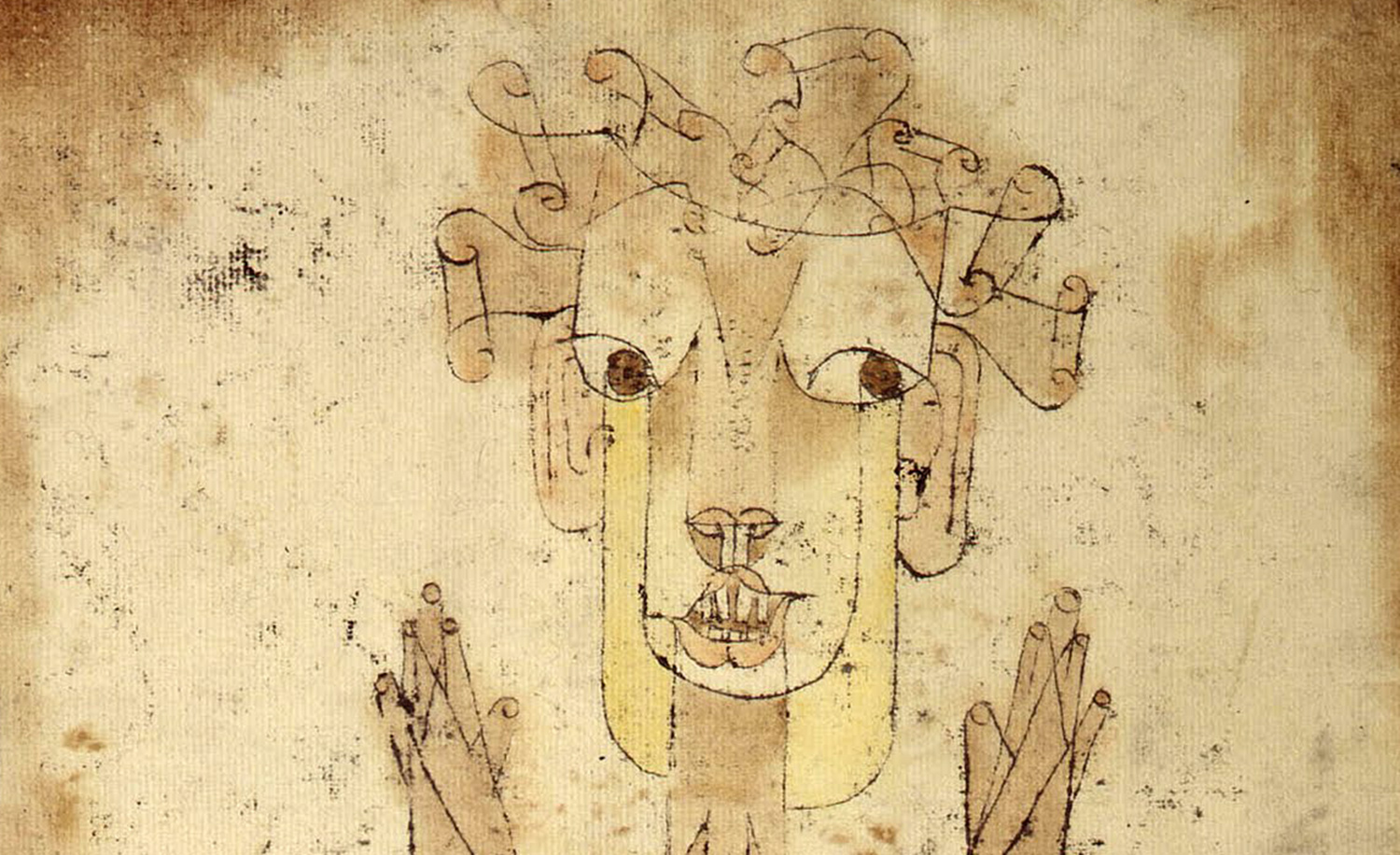Erased: Why the removal of female faces in the haredi world is a problem
“Wanton destruction of property
is a sin... Yet certain individuals have decided, against all halachic
literature, that vandalism is excusable when it makes women disappear.”
A father shows his son how to pull a woman's face off an anti-abortion organization's bus ad
The image of a father holding his child’s hand has
always been touching to me. Perhaps it makes me think of my own
childhood, walking with my father, as he explained how the world works,
telling me silly stories, or letting me explore the rough ocean waves
while making sure I was safe.
There
is something so loving and right about seeing a child’s small hand
tucked in the grip of a father’s stronger one. And there is something
about a father’s love and guidance that can be so influential on a
child.
I suppose that is why this image is so painful for me to see.
In
it, a religious man holds his child with one hand while using the other
to rip an advertisement off the side of a bus. On a public street. In
broad daylight.
Why? Because it has a woman’s face on it.
Defacing images of women and girls by haredi
men is now a common occurrence. While it is tempting to say that it is
the work of a few extremists, the fact is that this destruction is now
so expected that ad companies refuse to show women’s pictures in certain
areas knowing that they will be destroyed, and that the police are
unlikely to chase the perpetrators. The Knesset even convened a
committee meeting to discuss the horrific vandalization of a billboard
campaign to raise awareness of violence against women.
“Wanton
destruction of property is a sin. That’s a basic tenet of civilized
society and fundamental in Jewish law. Yet certain individuals have
decided, against all halachic literature, that vandalism is excusable
when it makes women disappear,” says Rabbi Scott Kahn, host of the
Orthodox Conundrum podcast.
How
did we get to the point that religious Jewish men destroy personal and
public property, without shame, in broad daylight, while educating their
small boys to do the same? What inspires this horrific behavior and
what else may it be causing that we cannot see?
IN
THE past few years, the Jewish community has experienced a lightning
fast slide toward extreme notions of shmirat eynaim, or “guarding one’s
eyes” from seeing things that may lead them to sin. The concept, meant
to help men avoid situations that may lead to sexual thoughts and thus
sin, has been recrafted as total segregation of the sexes outside of
marriage and the erasure of anything female, anywhere.
Events
such as weddings, which were once prime opportunities for people to
meet and form their own marriages, are now strictly segregated. Printed
depictions of Jewish life are devoid of Jewish women and girls. Even
higher education and places of employment are segregated to fit this new
demand.
This
extreme segregation has led to magazines, school books, dinner ads,
charity brochures, illustrated megillot and Shabbat books that show only
men and boys. Cartoons and comic strips leave women out with the
occasional mother represented by the back of her head. Even Artscroll
has adopted this approach and made influencer Daniella Renov remove her
image from her own cookbook.
While
insular hassidic communities have had this policy in place for some
time, the phenomenon of erasing women in the greater Orthodox community
has existed for only 15 years or so. By not forcefully rejecting this
practice, the Orthodox community has tacitly accepted that women should
not be seen and that men are entitled to a female-free environment.
In
2015, in these pages, we discussed the trend and how it was being
enforced with mafia-like tactics in some places in Israel. Since then,
many articles have delineated the impact the erasure has on women’s
financial, physical, and representative health. The lack of images of
women coupled with the dearth of information on women’s health plus
cultural norms has created a reality where haredi women’s health was
ranked eighth vs. haredi men’s second place.
Female
business owners have a distinct disadvantage when they cannot advertise
with their faces or with real life models. The lack of women’s images
as part and parcel of the average Jewish family and community leads to a
lack of women’s voices being heard and directly to policies that are
detrimental to them. Erasing women removes our humanity and redefines us
as objects, sexual objects, to be hidden.
The
impact of being seen mainly as a sexual object has been defined by many
girls as traumatic.
R. from New York says, “I internalized the message
I was inherently, in my essence, temptation first and foremost. I
associated my being and my body with being an object for others’ sexual
gratification, sins and fantasies. Before I could develop a healthy
sense of self in being female, my identity became shame. I was told I
was responsible for men. Their sins were my sins. And their thoughts
were my sins.
And I would be held accountable one day. As a young girl
it was a burden too suffocating and too shameful for me to carry day to
day and as I reached my teens I developed an eating disorder in an
effort to change my body and to just be seen less. It took me a long
time to recover from this.”
Despite
the evidence of the damage done to women and girls, increasing numbers
of institutions, charities, and publications censor images of females,
aged six or older.
Original ad for plastic dolls (left) and in 'AMI' magazine, with mother and daughters removed
TO
UNDERSTAND how this erasure and increased segregation affects Jewish
men and the Jewish family, The Magazine spoke to a number of men and
therapists.
Most requested anonymity due to the personal nature of the subject matter and for patient confidentiality.
“Moshe,”
19, is from a Modern Orthodox community. “By redefining women as
nothing more than the object of male desire, men have become forcefully
hypersexualized. This puts men in a very uncomfortable position in which
we are reduced to little more than our base desires and not allowed any
emotional depth. The insinuation that I have no agency over my own
sexual urges is insulting and this apparent lack of control is used to
explain away any actual issues I may be struggling with. The effect
religious guilt has on men and its contribution to the growing men’s
mental health crisis cannot be understated.
“When
men are told that sexualizing women is both inherent in their nature
and also incredibly sinful, we internalize that... when we do something
that, in our minds, constitutes engaging with our sexuality, which
thanks to the culture of erasure can mean even seeing the image of a
woman, the religious guilt crashes down full force. The desire to avoid
this guilt causes more anxiety, which makes every interaction more
guilt-inducing.”
“Aaron,”
in his early 20’s, spoke candidly about his struggles.”I’m married and
have struggled with a pornography addiction for over a decade. It’s
unfortunately extremely common for young men, and in my personal
experience it’s been entirely due to the frum societal culture of
extreme separation of the sexes.” He acknowledged the importance of
halachic boundaries but says, “the social creation of separation is what
creates toxic relationships, unhealthy marriages, warped senses of
oneself, and sadly, pornography addictions.”
Shlomo
Lieberman, a clinical social worker in New York, has worked with the
frum community for over 30 years. He says that in his experience the
extreme segregation and erasure has “turned women, literally, into the
forbidden fruit and has contributed significantly to the sex-addiction I
see in my patients.”
Additionally,
he says, it deeply impacts the marital dynamic. “Men aren’t learning
what women’s needs are. They don’t even recognize that they have needs.
It’s not out of maliciousness, it’s simply that they haven’t learned to
see them as whole beings with needs. Where do they interact with them?
Girls’ and boys’ schools now have different vacations, brothers and
sisters don’t spend much time together. Where will they learn to speak
to girls, to understand them or to value their opinions? Not in school,
not via books or magazines, and now not in the family.”
He
says that the majority of a person’s learning is passive learning, “If
they don’t see women represented in society, in magazines, in the
family... they learn very clearly that their opinions simply aren’t that
important.”
Elementary
school educators see the results of this in their students. Rabbi Moshe
Nachbar says that the erasure of all things female in frum publications
normalizes something that isn’t normal: the idea that women can’t
succeed or achieve. In his role as an educator in a Modern Orthodox
school in Florida, he feels it “breeds a dismissiveness in boys’
attitudes towards girls, their intelligence and achievements.”
Another
school administrator of an elementary school in the New York area that
has both girls and boys (separately) agrees, “males exposed to a
segregated gender system compounded by a lack of female representation
in publications lose the ability to identify the real value of
women,
often overlooking or devaluing their qualities. Worse, this leads to
men stripping themselves of the unique human feature of forming
interdependent relationships to combine forces and reach levels beyond
their own.
Lack of empathy and selfishness are just a few of the many
issues I see as a result.” He sees that it causes girls to lack
confidence in their own opinions and abilities. It is something he works
actively to counter.
Liebermen
says that as the extremism gets worse, the issue gets worse and he sees
more and more couples ready for divorce mere months after getting
married. Lieberman says he helps men unlearn what they have passively
acquired and to learn that women’s needs, opinions and perspectives
matter.
A hassidic
husband and father who grew up in the hassidic world, where segregation
and erasure are an ingrained part of the culture, says, “Even when
you’re living on the margins of the community – doing things that make
you a rebel, the female aspect of worldview stays with you. Wives were
part of the system, something that had to be done, dealt with.”
He
says, “Girls were to be chased, manipulated and experienced, not dated
or thought of as a partner. It wasn’t possible to think of women as
anything other than a function to be managed/exploited. We simply aren’t
trained to see the female experience or to consider her perspective. It
takes a long time to unlearn this and realize that there is an entire
other experience that women have – I’m actually embarrassed to say that
this conversation has made me aware of the fact that while I am active
in helping boys deal with the system, I haven’t even thought of how much
worse it must be for the girls.”
Talli
Rosenbaum, individual and couples therapist and certified sex
therapist, explains why erasure carries into marriage in this way.
“Creating intimacy requires seeing a person as a human being and not an
object. Complete gender separation creates an environment where women
and men are mysterious to one another, and that makes the experience of
understanding one another very difficult and often requires skill
building after the fact. The erasure of women acts to perpetuate the
idea of a woman as an object. This actually detracts from the authentic
goal of Jewish marriage as two people who are reim ahuvim who connect
with mutual respect and love.”
Another
therapist who works in the yeshivish world says, “I grew up with
hassidim who called women a ‘dus.’ A dus is a ‘thing.’ What’s the
effect? Erasure of women means literally seeing a woman as a nobody, a
thing. Opinionless. Someone who serves my needs of being holy and
superior.”
“Yosef,”
a hassidic man from New York described a painful marriage dynamic
where, despite being in terrible physical pain during intimate
relations, his wife insisted they continue, “because she was taught that
men need sex and it was her job to provide it.” He had to insist that
she see a doctor.
“She
had no sense of self, of her own worth.” He says it took them years of
therapy to get to a place where they communicated fully, expressed their
needs and unlearned the damaging results of severe segregation. “We are
human. We need emotional connection to our spouses.”
When
asked if it’s truly important for women to be seen in depictions of
society for a healthy community, Liebermen says, “If we want our boys to
see women as people, not as sexual objects – and that’s how we treat
women when we erase them, as sexual objects that need to be hidden lest
we sin or until we marry them – then we cannot treat them as such.”
IN THIS Rofeh Cholim Cancer Society illustrated ad, all patients and medical staff are male.
SOME
CLAIM that not showing women and girls protects them. A haredi social
worker in Israel says his wife does not allow her picture to be shown to
prevent it from being used by groups which share images of religious
women’s faces, taken from their social media accounts and photoshopped
onto other women’s – often nude – bodies. “The groups are almost
certainly religious,” he says. “There are Hebrew groups, English groups
and Yiddish groups. Some require that you prove you’re religious before
you get accepted. Once a single person creates the image, it will be
viewed by thousands.”
There
are also channels and accounts dedicated to what is called “frum porn”
where images of women are shared unbeknownst to them. He believes it is
very possible that those who most loudly insist on the erasure of women
do so to cover up this deviant behavior – “just as some of the most
vehemently homophobic people are themselves homosexual.”
Rabbi
Efrem Goldberg of Boca Raton, on a recent Headlines podcast, told host
David Lichtenstein of the policy of erasure, “I think it’s a mistake. If
we want the young women in our community to grow up to see images of
role models... They need to not be erased. They need to know that they
matter and they need to know that the Torah doesn’t demand that they
hide in the shadows or that their faces be blotted out.”
Mishpacha
magazine prints in Hebrew and English and is arguably the flagship
monthly publication of the Orthodox world with a global readership of
over 250,000. It shows no images of women or girls above the age of six
in its publications, Mishpacha and Family First, but does on the online
version of Mishpacha.
According to its publisher, Eli Paley, the main role of the magazine is to unify and elevate Jewish society.
In
an interview with Rabbi Efrem Goldberg, on his podcast Behind the Bima,
Paley stated that according to rabbis, there is no halachic basis for
not showing women’s images. He says that he chooses to censor women and
girls in order to enable the magazine to influence as many people as
possible, including those with the most extreme views.
As
Mishpacha gained popularity, it set the trend for smaller publications
and institutions – even women’s health organizations – that cater to the
Orthodox world. Now, Torah websites have replaced women with images of
chairs and flowers. In advertisements for breast cancer screening, women
are replaced with lettuce, and in depictions of health clinics, men run
the office, are all of the healthcare givers and indeed, all of the
patients. Women do not exist even in caricatures of Jewish life.
Numerous
emails requesting a conversation with Paley, prior to the writing of
this article to discuss concerns for the community went unanswered and
Mishpacha declined to comment for this article. It would seem that in
attempting to moderate the extreme, Mishpacha has unwittingly brought
extremism to the moderate – to the detriment of us all.
The
Jewish family has always been the strength of the Jewish community. And
it is this strength that is being torn asunder with the erasure of
women and girls. Extreme segregation and erasure of women harms us. It
dehumanizes our girls, hypersexualizes our boys, leads our fathers to
destroy, and removes the influence of our mothers. The erasure of women
upends the balance placed into the world.
Extremism
can’t be fought with extremism and intolerance can’t be beaten by
intolerance. To unify and elevate Jewish society, to help men and women
have healthy notions of self, and of how to deal with the opposite sex,
we must honor the place of both women and men in the community. It is
time to realize that the erasure of women was a failed experiment and
bring the gantza misphacha, the entire Jewish family, back into the
picture.

























